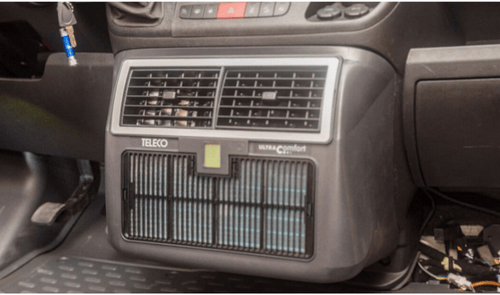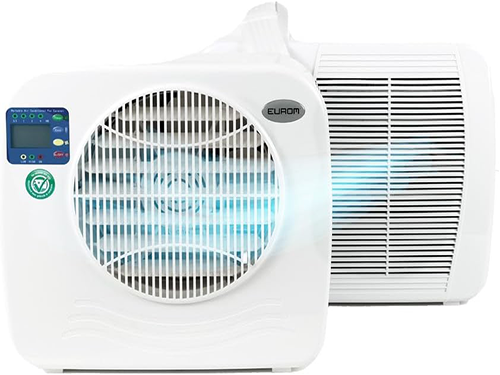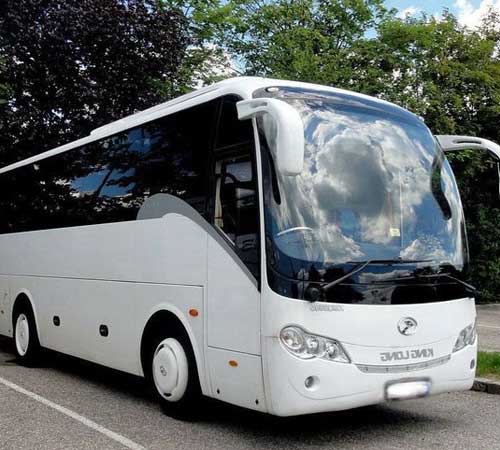Summer's Heat in Southern Europe
With direct sunlight making the searing heat of Southern Europe feel even hotter, temperatures in the shade can rocket beyond 40°C. U
nder
such circumstances, air conditioning practically becomes necessary to keep the inside temperature of your RV bearable.
The market today presents a large range of RV air conditioners, each with unique running principles, installation techniques, power needs, and cooling capacity. Your vehicle's size and the space that requires cooling should be factors taken into account while selecting an air conditioner. A lower-powered model can be sufficient if your only need is to chill a small portion, say the sleeping area. You would want a more strong system, though, if your RV features big front windows, lots of window space on the roof and walls, or inadequate insulation. This is thus because windows rapidly increase the temperature inside far faster than insulated walls or ceilings.
The Two Primary Operating Styles for Air Conditioners
Usually running on either one of two primary principles—evaporation-based systems or compressor-based systems—air conditioners
◆Evaporative Refrigeration
Through water evoration, evaporative air conditioners cool the air. Inside the unit, hot air goes through the evaporative filter, which causes water to evaporate and absorbs heat from the air, therefore decreasing the temperature. Although this approach is very rare in rooftop-mounted systems, portable units often have it. Though their cooling performance is less than compressor units, portable evaporative devices usually run on a 12-volt power source and require far less energy. These units also tend to raise humidity within the car, which would make things uncomfortable in high temps since more sweating results. Thus, evaporative air conditioning is not very efficient for RV cooling.
◆Condensed Based Air Conditioning
Most air conditioners for RV run compressor technology. These machines chill and condense refrigerant by pushing it through a compressor into a condenser. The refrigerant evaporates back into the compressor while the heat from it is subsequently expelled to the outside air. This cycle uses a fan to deliver the chilled air into the RV after helping to absorb heat from within the vehicle. These devices also help lower car interior humidity.
Modern
RV rooftop air conditioners often use inverter technology, allowing the compressor to operate at varying rates. The compressor runs faster the more the difference the inside temperature has from the set temperature. This architecture lowers noise, minimizes the high startup currents seen in conventional systems, and increases their energy-efficiency.
Many more recently designed models also have heating capabilities. Operating in this mode, the air conditioner draws heat from the outside environment to warm the RV's inside like a heat pump. Though these units can offer some heat, their limited heating capability makes them insufficient replacement for gas or diesel heating systems, especially in winter. Still, they can provide extra heat in the spring and autumn.
Installation and Types of RV Air Conditioners
Most RV AC System are rooftop units, consisting of an external device mounted on the roof and an air distribution system inside the vehicle. These systems are typically installed using the existing roof vent openings, which are usually square and measure 400x400mm. Some air conditioners can be fitted using adapters for different-sized vent openings.
Most modern rv ac unit operate on 230V AC power. For RVs equipped with a campground power hookup, these air conditioners can work directly without needing an inverter. However, if the campground’s power supply can't handle the high startup current of the air conditioner, it could cause the circuit to trip. To prevent this, many manufacturers indicate the maximum current rating for the power interface.
◆ Dometic
◆ Eberspächer
◆ Telair
◆ Truma
◆ Guchen
| Maufacture |
Dometic |
Eberspächer |
Telair |
Truma |
Guchen |
| |
 |
.png) |
.png) |
.png) |
.png) |
| Model |
Freshjet FJX72200 |
Breezonic
Performance HP¹)
|
Dual clima 8400H
|
Aventa Comfort
|
Ecooler2800A
|
| Roof equipment dimensions (L x W x H) |
752x702x225 mm |
1051×698x250 mm |
980×650×239 mm |
1008x660×248 mm
|
920×765×220 mm
|
| Indoor air distributor dimensions (L x W x H) |
579x518×48 mm |
503×482×45 mm |
600x520×49 mm |
670×523×46 mm
|
575×510×70.5 mm
|
| Roof equipment weight |
28,8 kg |
32 kg |
36 kg⁴ |
33 kg⁴ |
33.7 kg
|
| Indoor air distributor weight |
3,9 kg |
3,1 kg |
|
|
4.4 kg |
| Roof opening dimensions/thickness |
400×400 mm/k.A. |
360×360,400x
400mm/25-100mm |
400×400mm/k.A. |
380x350mm,400x
400mm/k.A.
|
400×400 mm
360mm×360mm
|
| Operating voltage |
220-240 V |
230V |
230 V |
230V |
220-240V |
| Cooling/heating power |
2200/2000W |
2500/2400W |
2500W/2460W |
2400 W/1700W |
2700W/2500W |
| Number of fan gears |
4 |
3 |
3 |
3 |
4 |
| Control method |
Remote control, app |
Device Operation,Remote Control App |
Remote control, app |
CP-Plus Panel, Remote Control, App |
Remote control, LED control panel |
12V Air Conditioners and Other Options
In addition to the mainstream 230V air conditioners, there are also 12V units available on the market. These units operate without an inverter, eliminating the cost, installation space, and weight associated with inverters. However, 12V units typically provide only half the cooling capacity compared to 230V air conditioners, making them more suitable for small to medium-sized RVs.
Other Options
Undercarriage Air Conditioner
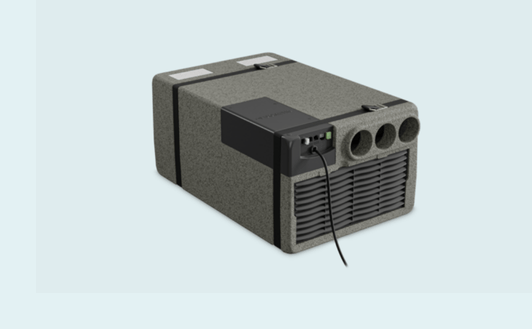
Air conditioners like the Dometic Freshwell FWX4 are installed in storage spaces near the vehicle's lower section. Cold air is directed into different areas of the interior via ducts or vents. Ideally, the air outlets are positioned close to the roof to ensure good air circulation. The storage compartment for the air conditioning unit should be located centrally in the vehicle and must have external ventilation and a drainage outlet for condensed water.
✔️ Direct air distribution can be achieved
✔️ The air conditioning unit is securely installed
❌ Installation can be quite labor-intensive
❌ Reduces storage space
Cabin Air Conditioner
Teleco from Italy recently introduced a new compressor-based air conditioner, the Ultra Comfort (pictured), which is installed in the center console of the cabin. This air conditioner has a maximum cooling capacity of 1760W and is also equipped with a heat pump that provides heating with a maximum output of 1670W. It operates on 230V AC and is currently only available for vehicles from the Stellantis Group, which includes well-known camper van brands like Fiat Ducato, Citroën, and Peugeot.
✔️ Does not occupy the roof vent space
✔️ Installation is relatively simple
❌ Loses cup holder functionality
❌ Cool air is only directed from the cabin
Split-type Air Conditioner
Split-type air conditioners, like the Eurom AC 2401 , are portable devices with two components: an outdoor unit and an indoor unit. The two parts can be mounted on the window frame. The indoor unit draws in the interior air and cools it using refrigerant, which then transfers the heat to the outdoor compressor. Compared to rooftop air conditioners, split-type units typically have lower performance (e.g., Eurom AC 2401: 696W) but operate more quietly.
✔️ Lower purchase cost
✔️ Operates quietly
❌ Relatively lower performance
❌ More complex operation
In the dreamlike bay parking spot, if the temperature inside your RV is just right, the place becomes even more wonderful — and that’s where an rv air conditioner comes in.


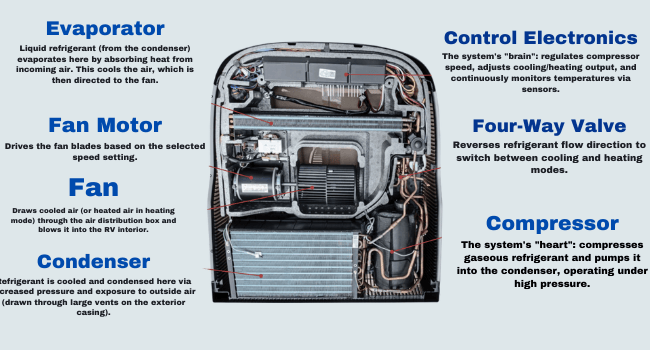

.png)
.png)
.png)
.png)

